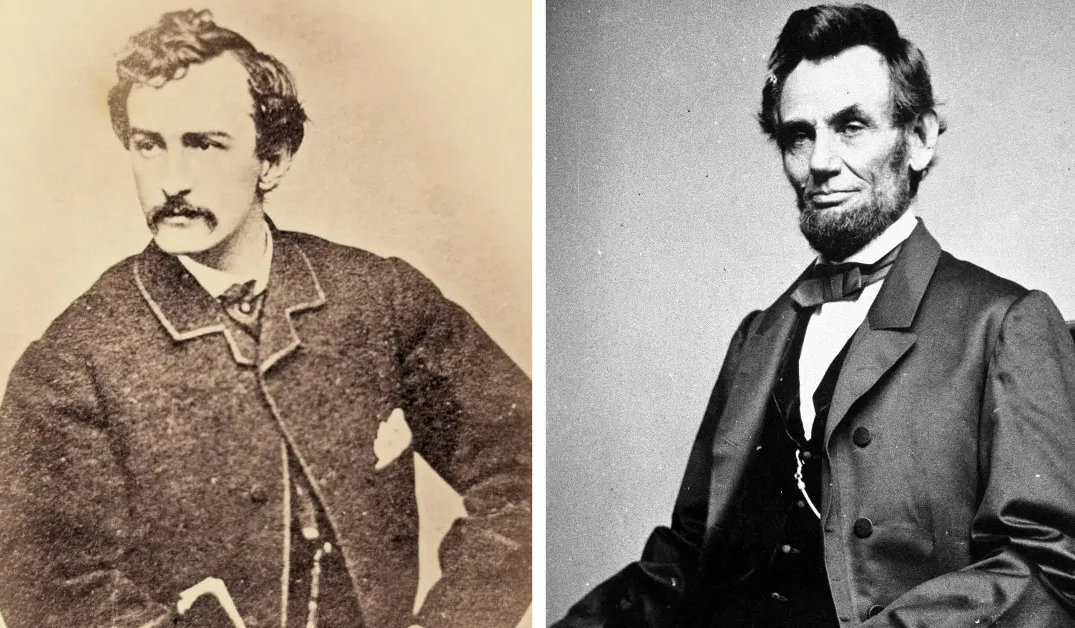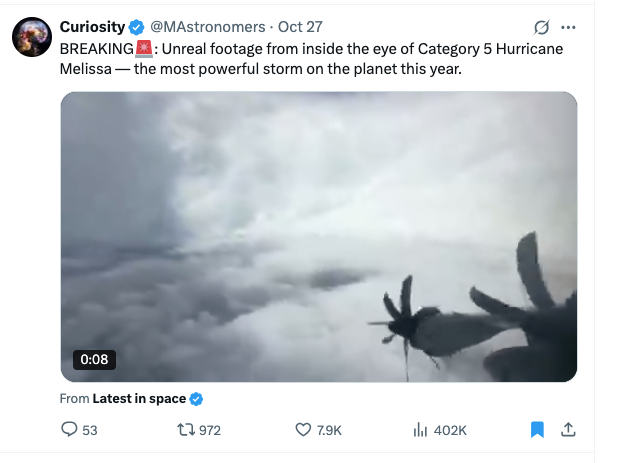Lincoln's assassin planned the shooting while in Montreal

It's the fall of 1864. The war is going very badly for the Confederates. John Wilkes Booth is kind of the Brad Pitt of North America. He was a famous, dashing young actor, a committed supporter of the Southern Confederacy. A man who despised Lincoln. He begins to plot to kidnap Lincoln, in order to bargain Lincoln's life for the exchange of the tens of thousands of Confederate prisoners who are in prisons all along the Canadian border. So he has this plot and where does he go? He goes to Montreal. He knows this is where some of the leading Confederate agents are. He knows this is where they're getting their money and their support. He checks in at the St. Lawrence Hall. The owner who admires Booth, makes sure he gets one of the best rooms. Booth settles in. He's playing cards with some of the leading Confederate agents and spies. (via CBC)
For 25 years this dolphin guided ships through a dangerous channel near New Zealand

Pelorus Jack was a Risso's dolphin that was famous for meeting and escorting ships through a stretch of water in Cook Strait, New Zealand. The animal was reported over a 24 year period, from 1888 until his disappearance after 1912. Pelorus Jack was usually spotted in Admiralty Bay near French Pass, a notoriously dangerous channel used by ships travelling between Wellington and Nelson. Pelorus Jack was once shot at from a passing ship, and was later protected by a 1904 New Zealand law. The dolphin guided the ships by swimming alongside a water craft for 20 minutes at a time. If the crew could not see Jack at first, they often waited for him to appear. He was first seen around 1888 when he appeared in front of the schooner Brindle. When the members of the crew saw the dolphin bobbing up and down in front of the ship, they wanted to kill him, but the captain's wife talked them out of it. (via Wikipedia)
Some of the wild dogs in Chernobyl have turned blue but scientists don't know why

Caretakers looking after the stray dogs living around Chernobyl have made a startling discovery — several of the animals have suddenly turned blue. The group, which cares for hundreds of dogs in the Ukrainian radioactive exclusion zone, shared a video showing packs of animals with patches, and in some cases, coats of bright blue fur, which has left experts baffled. “We are not sure exactly what is going on," the team admitted. “They were not blue last week. We do not know the reason, and we are attempting to catch them so we can find out what's happening,” the team wrote alongside the footage. “Most likely, they’re getting into some sort of chemical.” The organisation provides the animals with food and medical attention each year. These dogs are the descendants of pets left behind when residents fled after the 1986 Chernobyl nuclear disaster. (via Express UK)
Hi everyone! Mathew Ingram here. I am able to continue writing this newsletter in part because of your financial help and support, which you can do either through my Patreon or by upgrading your subscription to a monthly contribution. I enjoy gathering all of these links and sharing them with you, but it does take time, and your support makes it possible for me to do that. I also write a weekly newsletter of technology analysis called The Torment Nexus.
These Chinese statues have been slapped and spit on for five hundred years

For over five centuries, the statues of Qin Hui, a former chancellor of the Song Dynasty, and his wife have been slapped, kicked, and spit on by millions of people. In the heart of Hangzhou, forever facing the impressive mausoleum of a brave general they once framed and got executed, are the statues of Qin Hui and his wife, two of the most hated and despised figures in Chinese history. They are depicted on their knees, with their heads down and their hands tied behind their back, eternally humiliated for their treason. But that is not punishment enough for the cast-iron statues, as they also have to endure the slaps, punches, and kicks of hundreds, sometimes thousands, of people every single day. To get an idea of how much abuse Qin Hui and his wife receive, you should know that their statues have been replaced 11 times since the originals were installed in the late 15th century, with the latest ones dating back to 1979. (via Oddity Central)
The forgotten female artist behind the world’s most popular deck of Tarot cards

In 1909, illustrator Pamela Colman-Smith spent six months creating what would become the world’s most popular deck of tarot cards. Her graphic interpretations of such famous cards as The Magician, The Tower, and The Hanged Man helped readers to get a handle on the story of every newly dealt spread. Colman-Smith — known to friends as “Pixie” — was commissioned by occult scholar and author Arthur E. Waite, a fellow member of the British occult society the Hermetic Order of the Golden Dawn, to illustrate a pack of tarot cards. In a humorous letter to her eventual champion, photographer Alfred Stieglitz, Colman-Smith described her 80 tarot paintings as “a big job for very little cash,” though she betrayed a touch of genuine excitement that they would be “printed in color by lithography… probably very badly.” (via Open Culture)
What a Category 5 hurricane looks like from the inside

Acknowledgements: I find a lot of these links myself, but I also get some from other newsletters that I rely on as "serendipity engines," such as The Morning News from Rosecrans Baldwin and Andrew Womack, Jodi Ettenberg's Curious About Everything, Dan Lewis's Now I Know, Robert Cottrell and Caroline Crampton's The Browser, Clive Thompson's Linkfest, Noah Brier and Colin Nagy's Why Is This Interesting, Maria Popova's The Marginalian, Sheehan Quirke AKA The Cultural Tutor, the Smithsonian magazine, and JSTOR Daily. If you come across something interesting that you think should be included here, please feel free to email me at mathew @ mathewingram dot com



